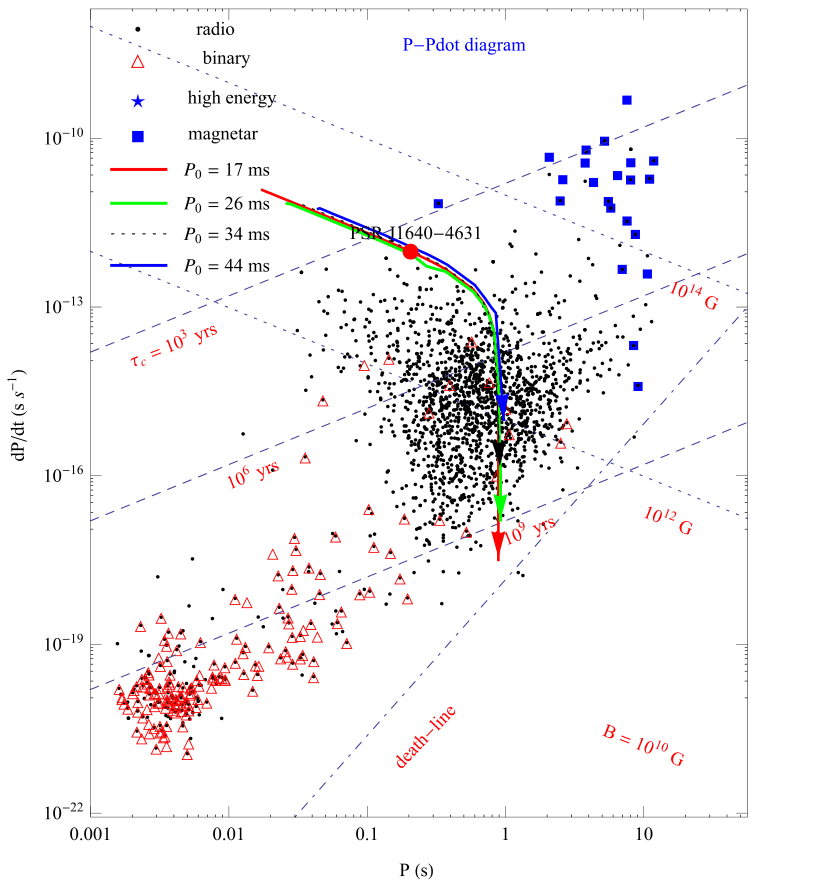In a recent work published in The Astrophysical Journal, Dr. Zhifu Gao, an associated research fellow at XAO pulsar research group, and his co-researchers obtained new theoretical results for the magnetic field and spin-down evolutions of pulsars.
PSR J1640−4631 is the first pulsar reported with high braking index of 3.15(3) measured at X-ray band and is associated with a supernova remnant. Its energy loss from rotation serves as a supply of high energy to photons, which results in a pulsar wind nebula (PWN) that is the most luminous source of TeV γ-ray in the Galaxy. In this work, the high braking index of PSR J1640-4631 was interpreted with a combination of the magneto-dipole radiation and dipole magnetic field decay. By introducing a mean rotation energy conversion coefficient, which is the ratio of the total high-energy photon energy to the total rotation energy loss, and combining a reliable nuclear equation of state obtained from the pulsar’s observations, they estimated the initial spin period, P0 ~ (17–44) ms, and the true age, t~2900-3100 yr, of the pulsar. The high braking index was attributed to its long-term dipole magnetic field decay. After 105-106 yr dipole magnetic field decay, the pulsar moves toward the bottom right region in the P-Pdot diagram and eventually reaches the death valley located on the bottom of diagram (see Figure 1 for more details).
It is the first time researchers put forward a ‘Coupling model’ for neutron star’s magnetic field and rotational evolutions. In addition to explaining a pulsar’s high braking index soundly, the proposed Coupling model will find wide applications to pulsars with low braking index, such as PSR J1734-3333. The work is developed based on and inherited from the classical magnetic dipole model, and expected to attract more attention from colleagues both at home and abroad.
Article Link: http://adsabs.harvard.edu/abs/2017ApJ...849...19G

Long-term rotational evolution of PSR J1640−4631 dominated by the dipole magnetic field decay. Radio, binary, and magnetars are defined by the black dot, red triangle, and blue square, respectively. The red solid line, green solid line, black dotted line, and blue solid line stand for the predictions of the dipole magnetic field decay model with P0 = 17, 26, 34, and 44 ms, respectively. The red filled circle denotes the observations of PSR J1640−4631